Perhaps analog shooters in Vietnam are all familiar with Huy Hoang, not only as a photographer but also the owner of a huge film camera collection including many rare and limited ones. Meeting him one afternoon at Cong Cafe, Matca have had the opportunity to listen to a lot of fascinating stories about the history of classic film cameras in his collection as well as his sharing about the journey of how he came to love analog cameras. After many years exploring these sophisticated machines, Hoang has come to the conclusion that no camera produces bad images even when they are imperfect.
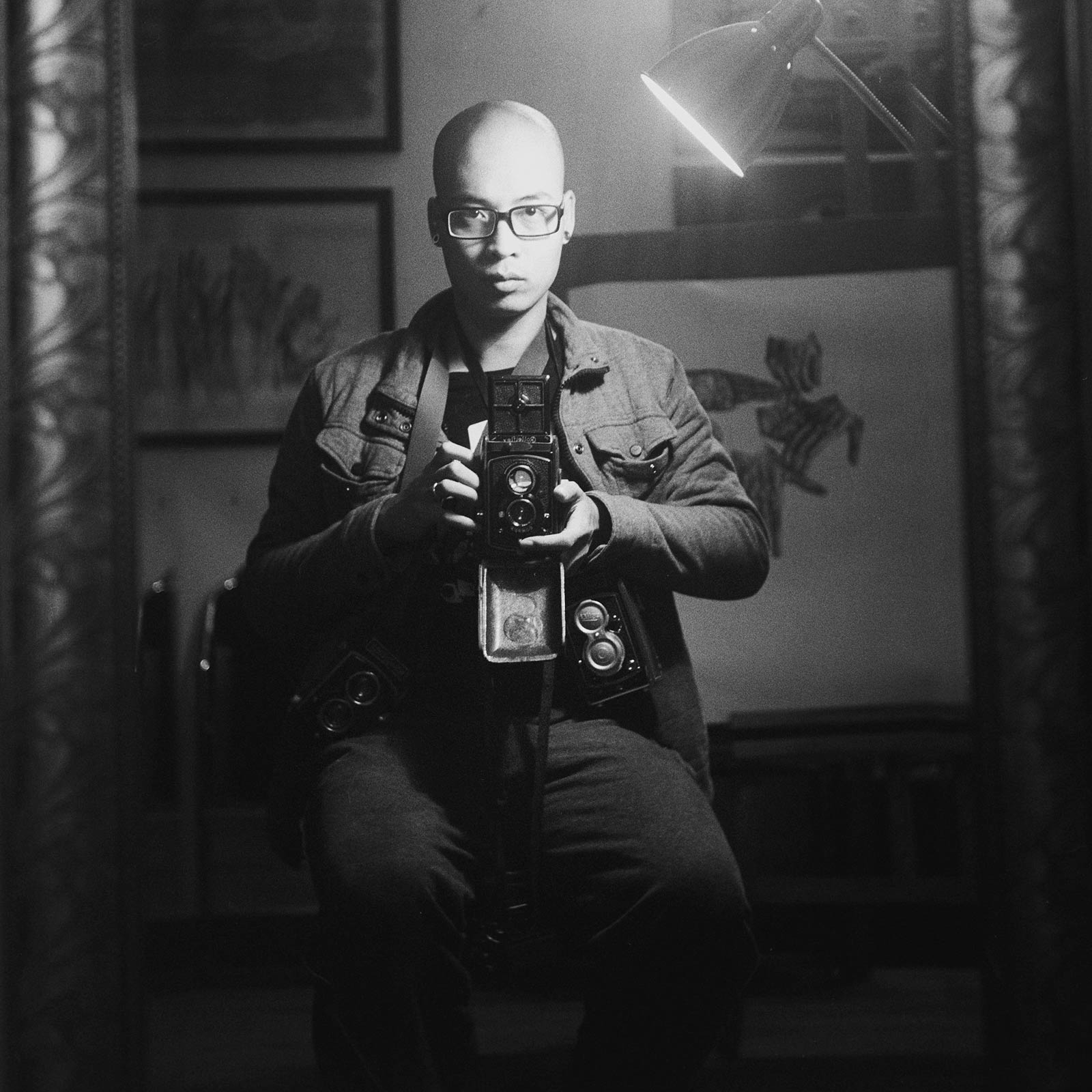
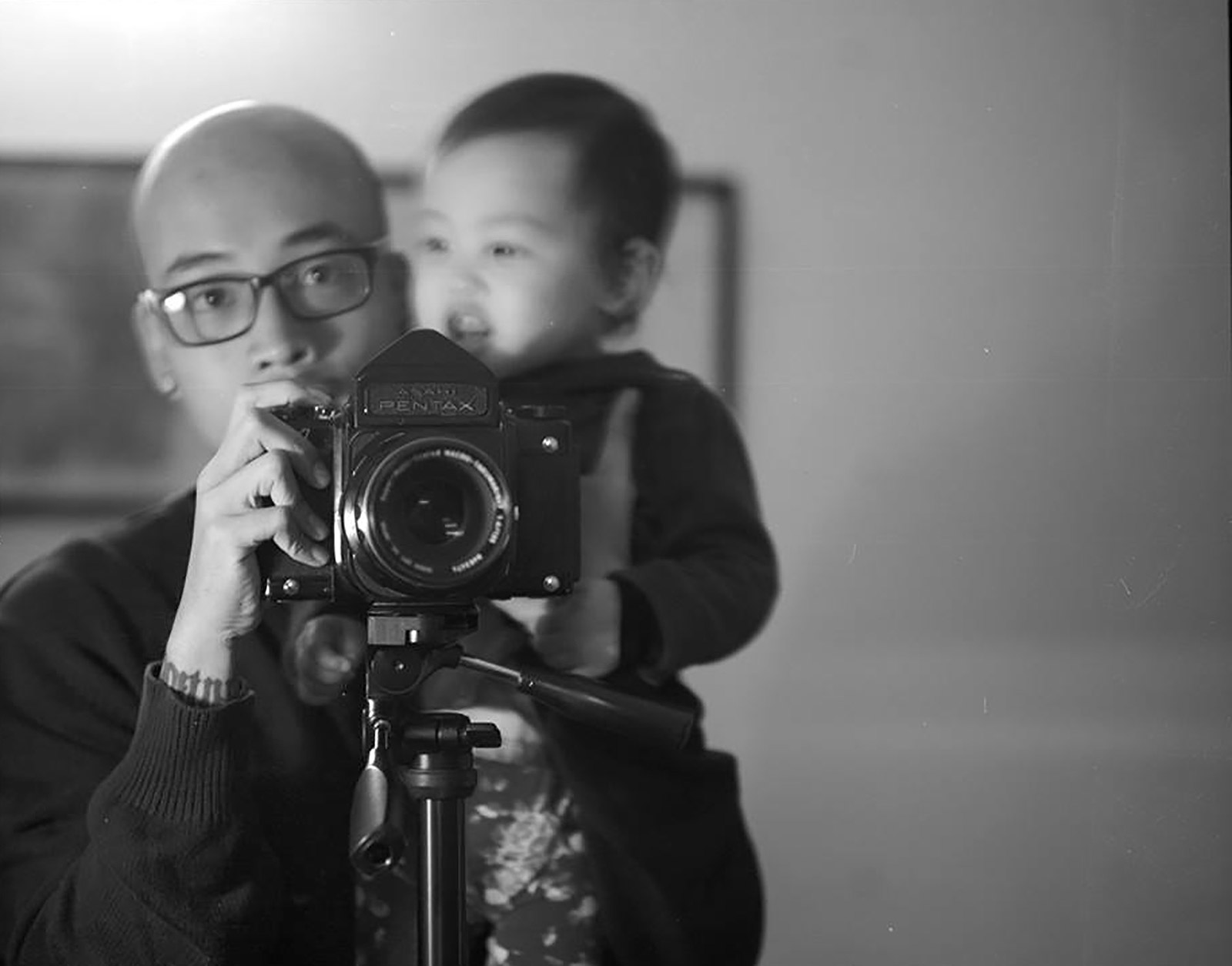
For now are you the one who has the biggest collection of antique cameras in Hanoi, if not in Vietnam?
I think my collection is the biggest compared to those of people born in the 80s. Later I get to know more people who collect even rarer cameras but they are mostly middle-aged and have no financial concern. These people have deep understanding and great passion for film cameras.
Film cameras are not the same as digital cameras (DSLR). Digital cameras often have high liquidity, while film cameras are considered a kind of collectable antique and so require a decent level of understanding. The number of people here who have in-depth knowledge of film cameras is not high.
And it will never be high?
I think in the next 10 years there won’t be many. For example, I have a Kinoptik lens that is much more expensive than a Leica but 9 out of 10 people asked probably wouldn’t know.
I have a Japanese friend who has great knowledge about film cameras. It is that friend who introduces me to a lot of antique models that I have never heard of before. I knew him by chance at a cafe in Lo Su, he saw that I was displaying quite a few film cameras so he approached me. His name is Saito and he is a lecturer at the National University.
I see that you use both digital and film cameras, so when do you use what?
Most of the time I use digital cameras for my job as a photographer. With film cameras, I shoot family members and creative shots as a hobby. Normally I use film cameras whenever I have time to take a walk, in order to relax. I take pictures of everything, people I meet on the street, objects, scenes,…
I use film cameras to shoot family members, because those moments are filled with emotions. For instance, I usually photograph my daughter with different cameras and types of films because to me, she is a source of inspiration.
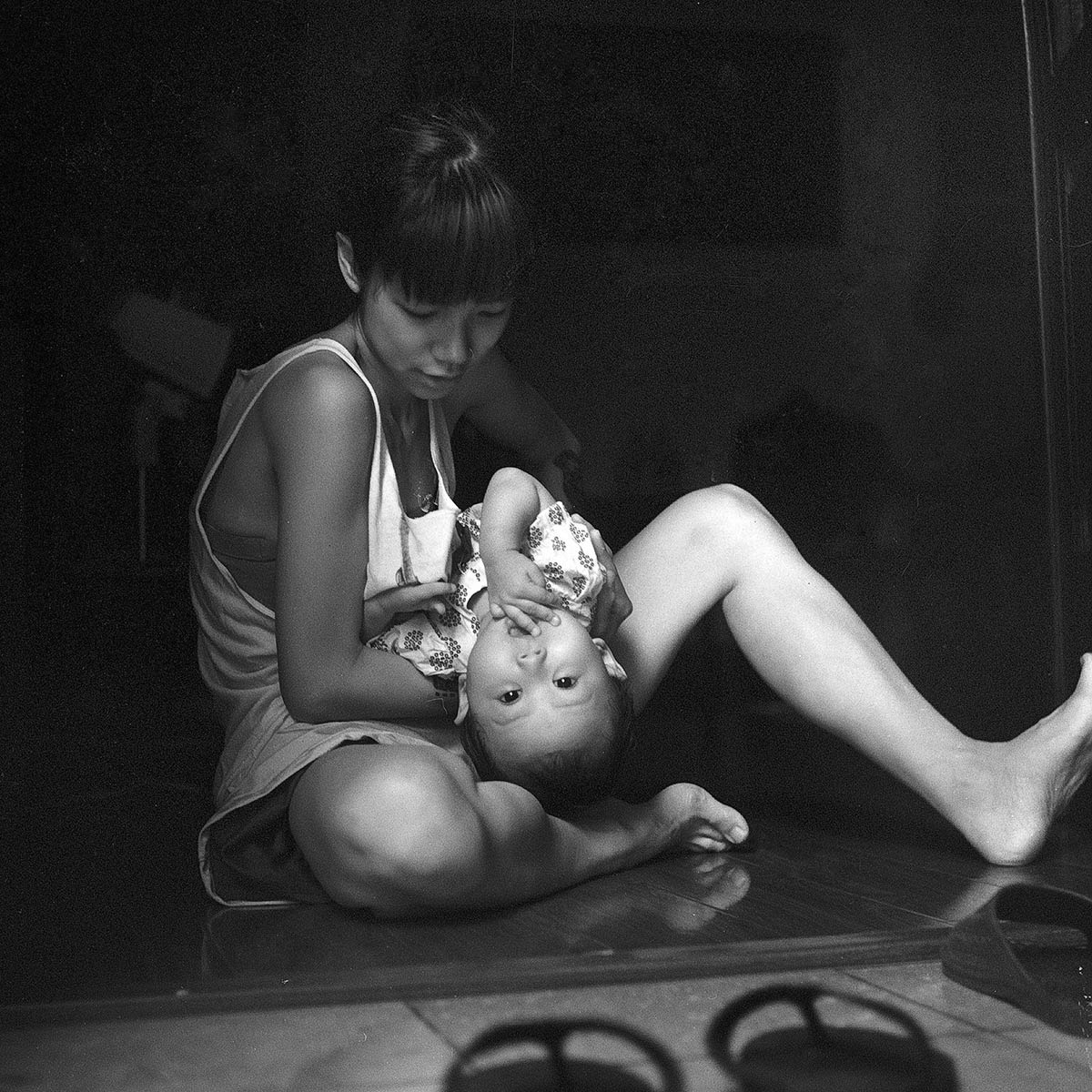
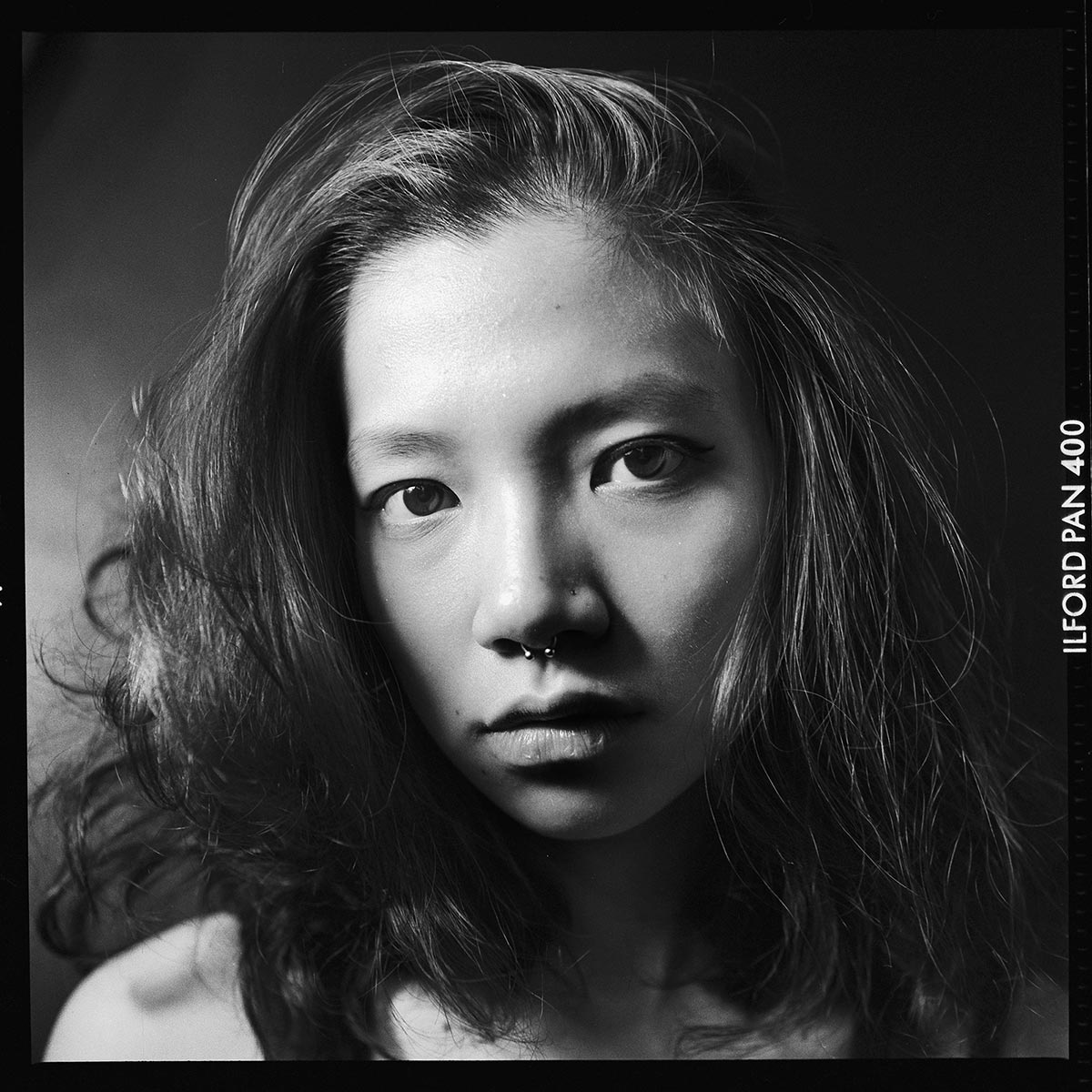
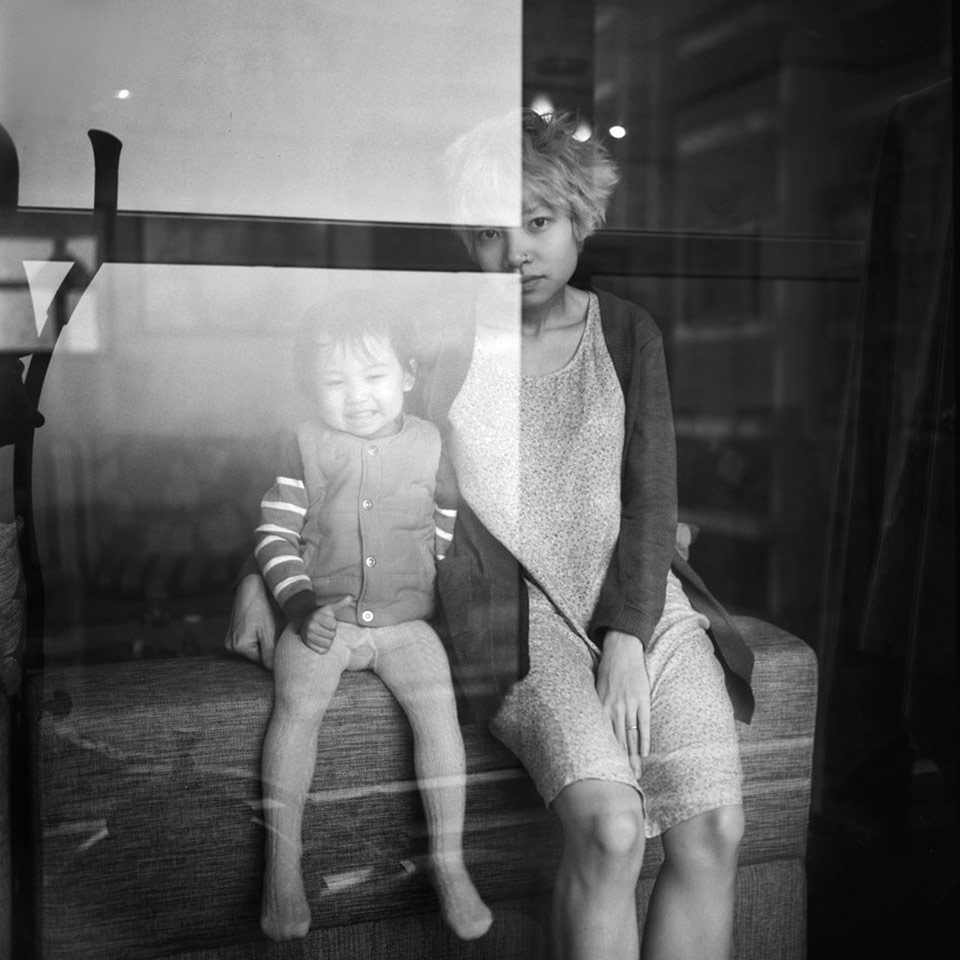
Can you share more about how you first got in touch with film cameras?
My first camera was a digital, but afterwards I wanted to try analog. Having used film cameras, I realized that the picture quality was even better than that of digital ones so I started to research more. At that time I used a 35mm one, but it’s not until I got hold of a Rolleiflex medium format that I was totally captivated by film cameras.
In my time, medium format cameras in Hanoi were very rare, which meant only longtime practitioners had them. From Rolleiflex I started to find out more about other TLR (Twin-lens Reflex) and SLR (Single-lens Reflex) brands. All are medium format with different ratios like 3×4, 4×4, 6:6, 6:7, 6:8, 6:9, 6:12, 6:17,…There are a lot of formats, each of which has different models.
Then I moved to learn film developing techniques. I scanned my own black and white negatives and learnt developing techniques. Practicing film photography is intriguing, and those pictures also bring lots of emotions. For example, there are things that can be done by only analog cameras such as unlimited exposure time. Digital cameras cannot allow that due to life of the battery. There used to be one who did a one-year exposure. The digital sensors in DSLR captures the picture but in film cameras, the silver-coated negative does the job and it can be enlarged to a size as large as you like.
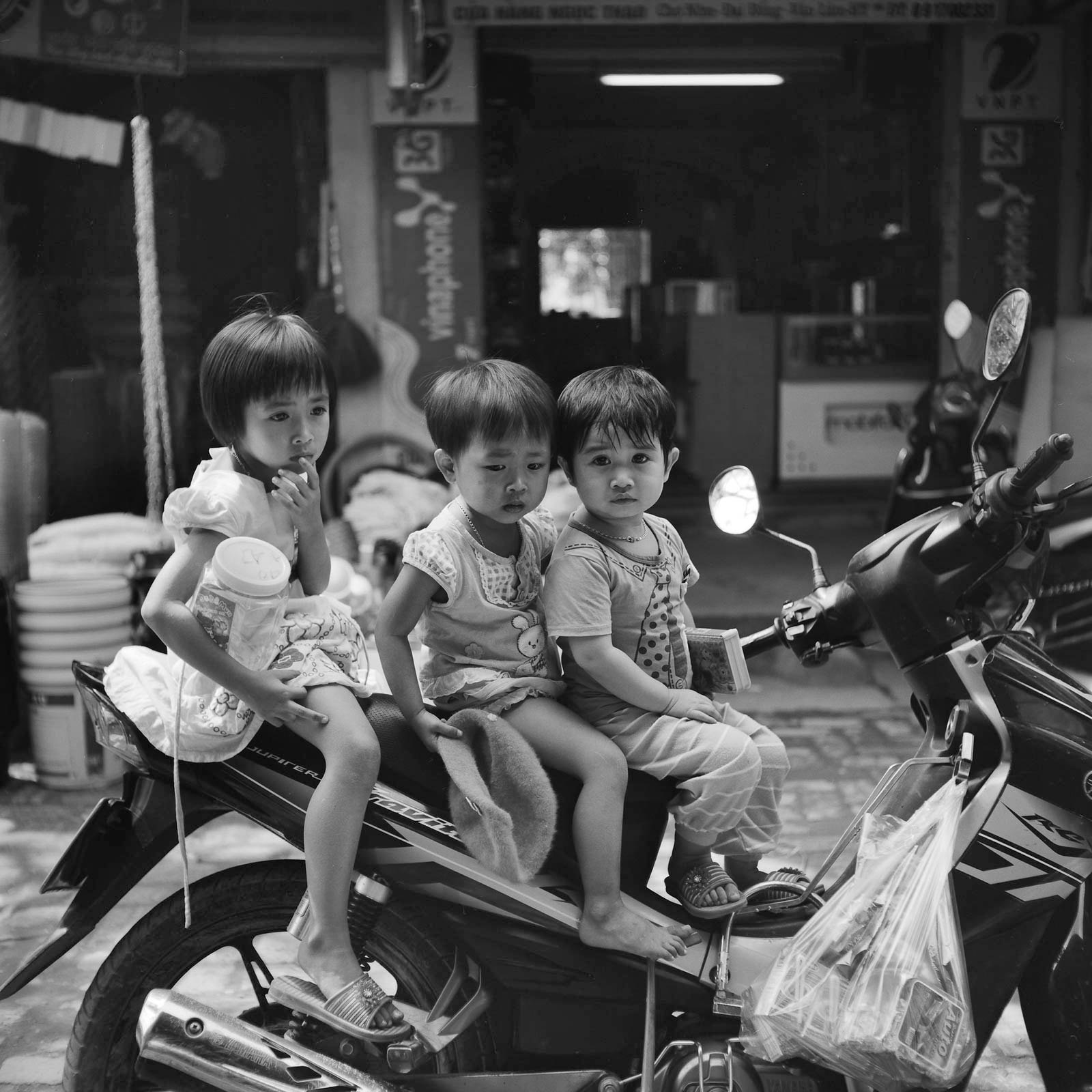
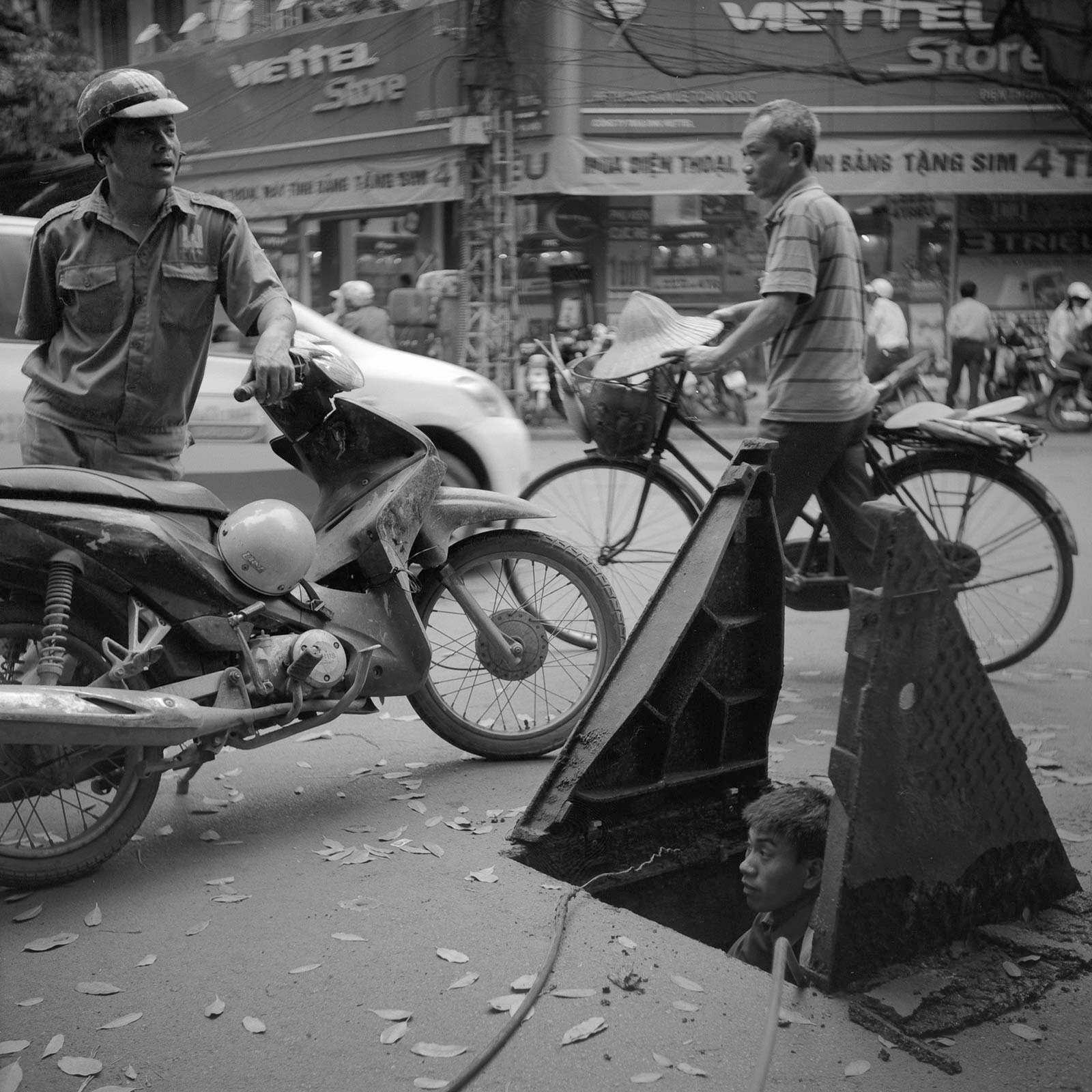
What do you find most interesting about Rolleiflex?
With Rolleiflex, I realize that the most expensive ones do not necessarily take the best pictures. Between a good looking and a worse looking camera, sometimes the latter does the job better. The reason is that film cameras have been passed around through many users, so the important thing is how those people utilized the camera. I always believe that weather-beaten cameras are good ones because they have been used a lot. Newer ones are more highly collectable, less frequently used.
All Rolleiflex cameras in the old days were manually assembled and tested by the brand’s standards. According to some articles on a forum about Rolleiflex, the tester was an artistic person. Sometimes while testing he added something to the devices and there came the limited versions. For example, with the Rolleiflex 3.5T, the tester found some extra components so he decided to add them to the camera. This 3.5T version later became a hot deal on the market because it is light, reasonably priced and can produce good quality pictures.
What is your favorite camera in the collection?
I think there are two that I will never sell and probably will not be able to sell. The first one is my first Rolleiflex, Rolleiflex Original. It’s appearance is not very good, looks like a tin can. At that time I purchased it for less than 100 USD with the condition being nearly perfect. I accidentally found it on the Internet and the seller himself did not know much about the camera. They just noted that it was passed down from his grandfather, not being sure if it was still working. That one is a prototype of the Original model, with only 300 cameras having been produced in 1929. Up until now a lot of them were displaced due to the war so I’m not sure how many are left in the world.
The second one I will not sell is highly rare vertical Exakta 66 produced in 1953. Sometimes I find on eBay that are sold for 3000 – 5000 USD.
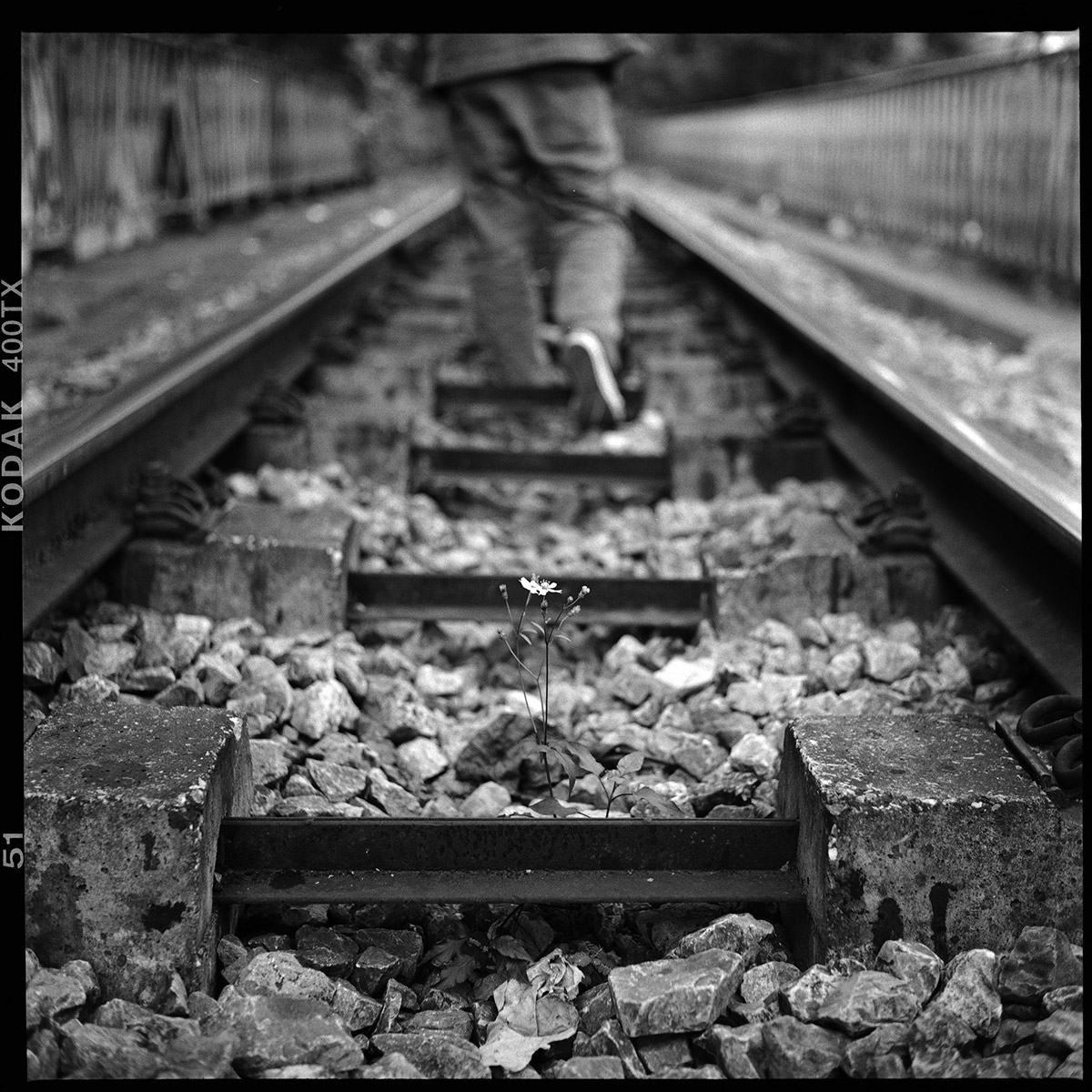
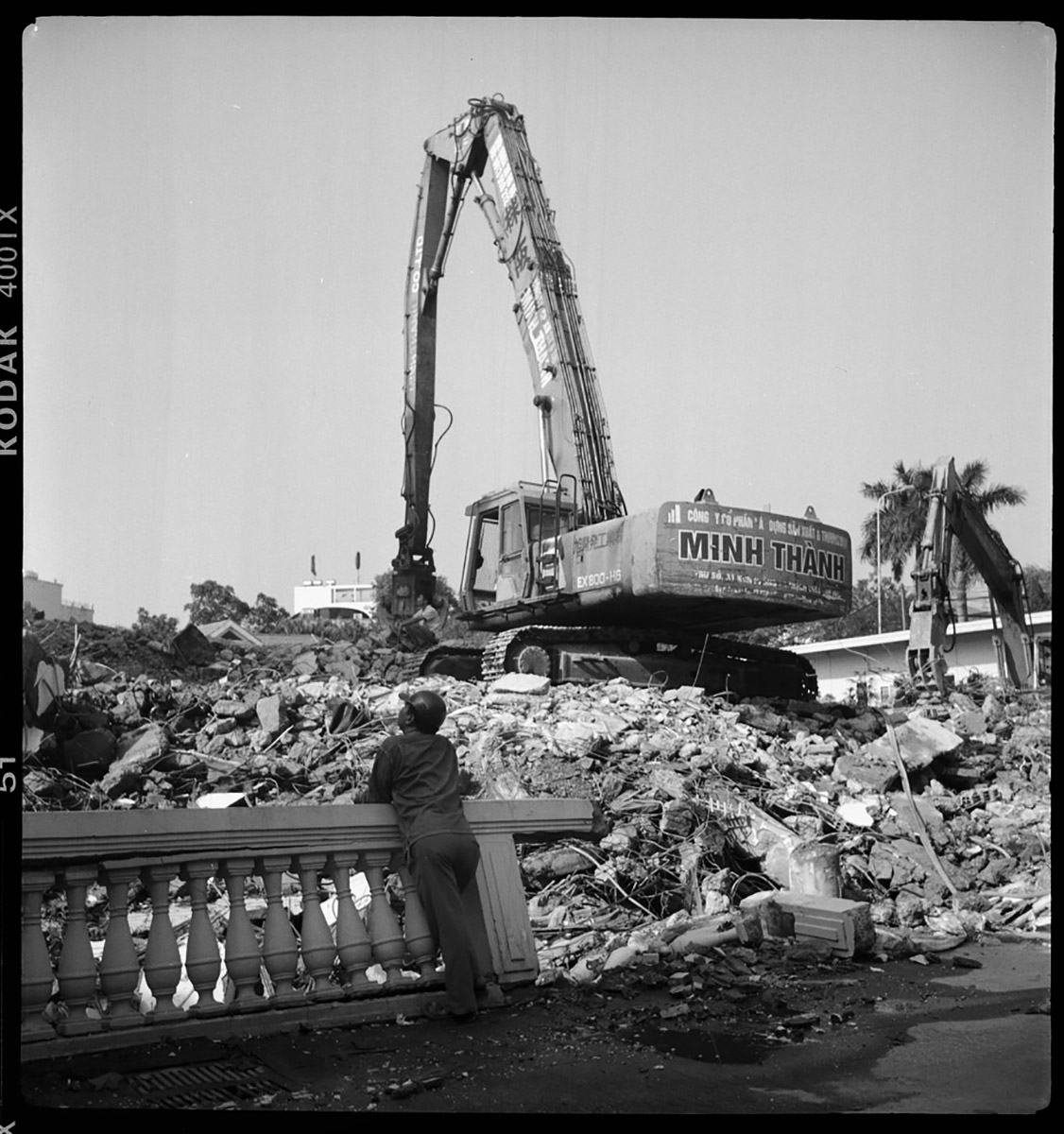
Is there any interesting story about antique film cameras that you want to share?
I usually look up history of film cameras and production brands. One thing I find pretty cool is that cameras produced in different nations have distinctive features of each country.
Take the “freedom train” of Leica for example. When the brand was founded, factory workers were mainly Jewish. WWII broke out and the Nazis wanted to kill all Jewish, so Ernst Leitz, the Leica manager at that time, sent the best engineers and their family to the US, France and Hong Kong by train. Because of that hundreds of Jewish people were able to escape their doomed fate.
After the war, some Leica representatives were touring other promising lands to build a new factory and Canada was the chosen one. The production quality of Leica factories in Canada and Germany were slightly different. Germany had been renowned for mechanics so the structure of lens hood produced here was very good. Another difference was the glass used to make the lens, because it was made from sand yet there was no sand in Germany so they had to import sand from Africa. Whereas the factory in Canada could take advantage of local sand to produce lenses. Leica Canada cameras, despite producing better pictures, have lower level of endurance than Leica Germany ones, and are cheaper than those produced in Germany.
German cameras have extremely high level of endurance. If you dismantle a Rolleiflex you will see many connecting gears. If comparing Rolleiflex with Seagull from China, they have the same mechanism but components of Seagull cameras are evidently fewer than those of Rolleiflex ones. As a result, the expiration duration of Seagull cameras is much shorter than Rolleiflex’s.
While German cameras have the best materials and are made with the most enduring mechanism to give the best quality with high price, Japanese ones have the most reasonable mechanism and materials with economical price. The style of German cameras are generally stable and industrial, whereas Japanese ones’ change according to trends. The Japanese seem to have picked the best camera producing techniques from other countries to produce their own devices.
French cameras also possess French characteristics, which are fashion and romance. I have a French Semflex camera whose names is Joie de vivre (The joy of life). The camera only has 3 shooting speeds and the appearance looks pretty classy. The pictures from of French cameras are also relatively soft and smooth with low contrast.
American cameras are like American’s characters. The appearance are quite “muscular,” macho and the camera itself is stiff. British cameras do not have unique design yet give clear and tactfully sharp images.

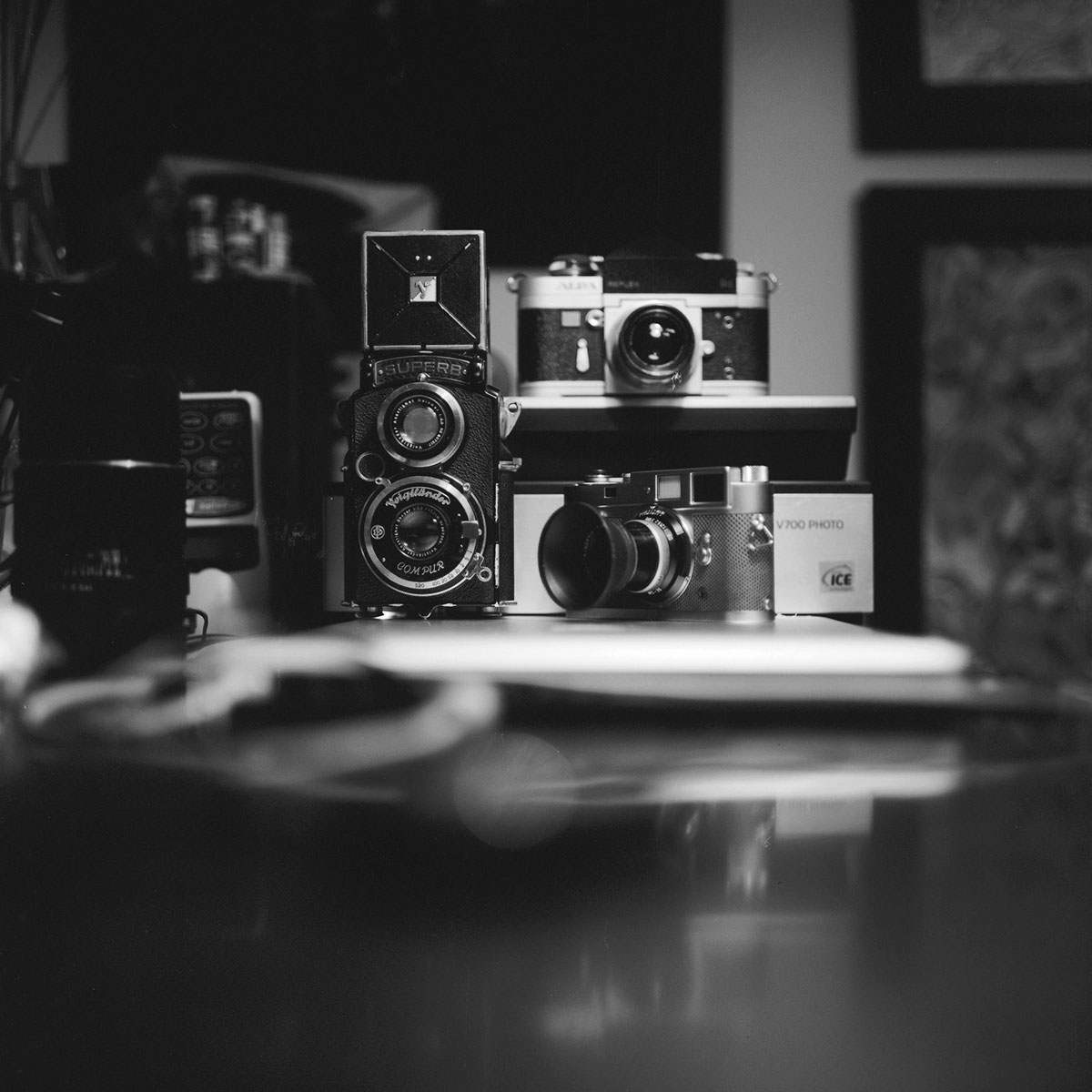
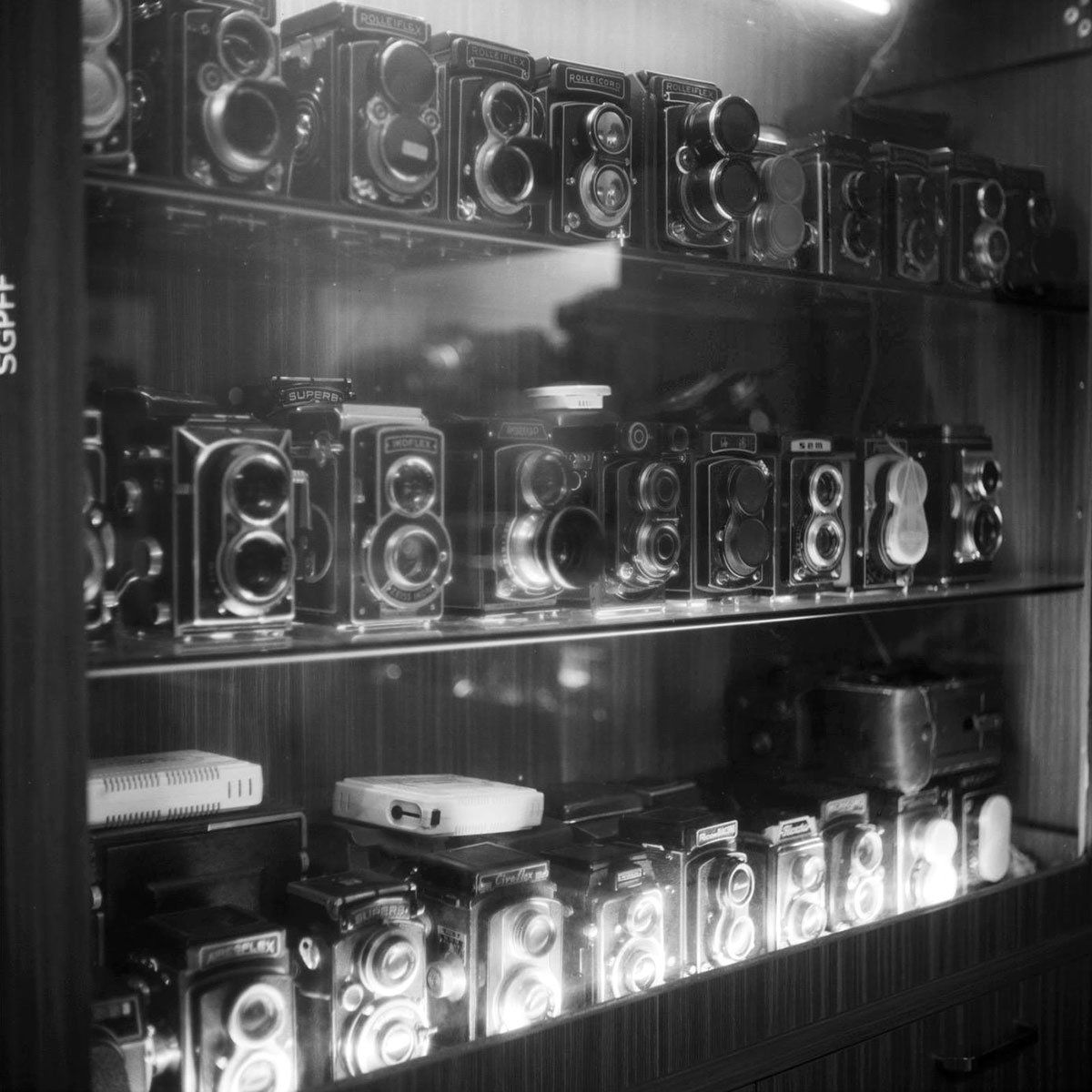
What is the biggest challenge to have such a collection of rare cameras, in your opinion, besides the issue of finance?
Probably the effort to find those cameras. I think a lot of people are willing to pay the same or an even higher price, but not many can do research and find where to purchase each camera. A lot of cameras cannot be found on eBay but you have to look up on specific sites about film cameras written in Japanese or French.
Do you have any advice to those who wish to find out about film photography?
Don’t pay too much attention on gear if you want to stick to this field. Devices are infinite and trying to hard to invest on them easily wears you down.
After quite a while researching and using a great number of film cameras and lens, I realize that no device gives bad quality pictures. Even those with fractures in the lens can produce interesting images. The most important thing is what is being delivered through the photo – the emotion of the photographer.
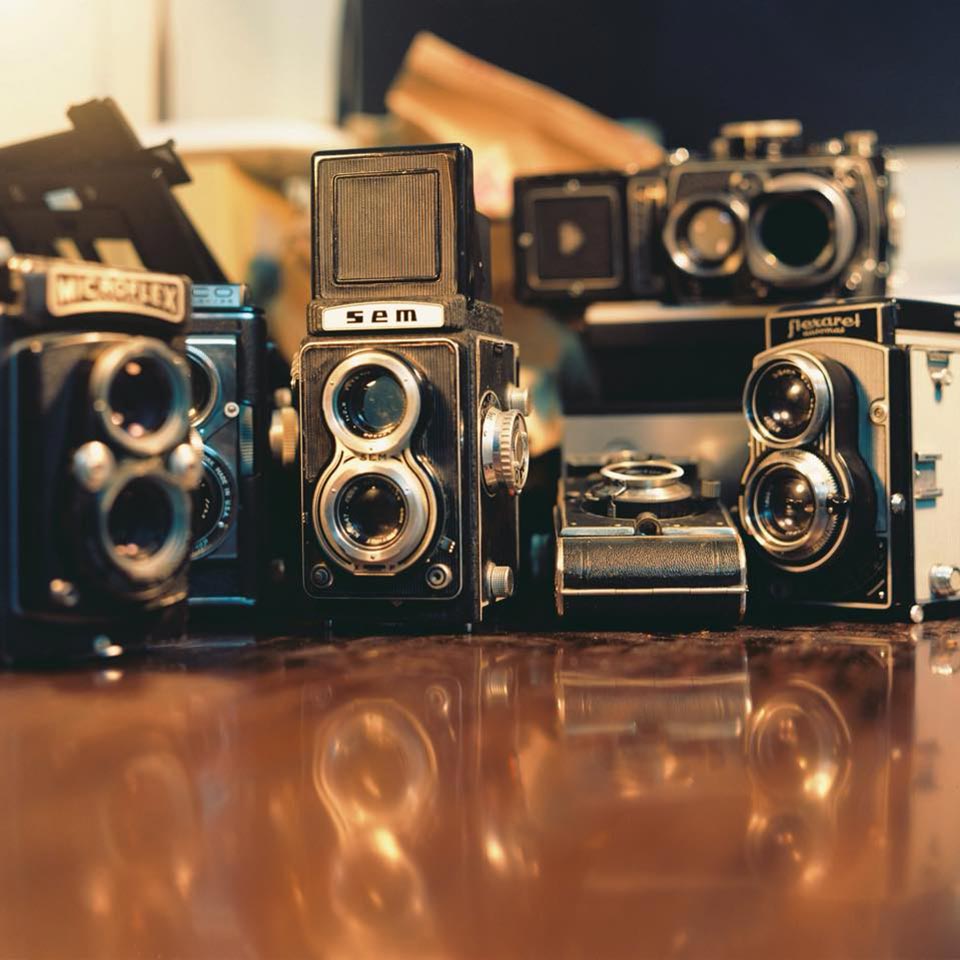
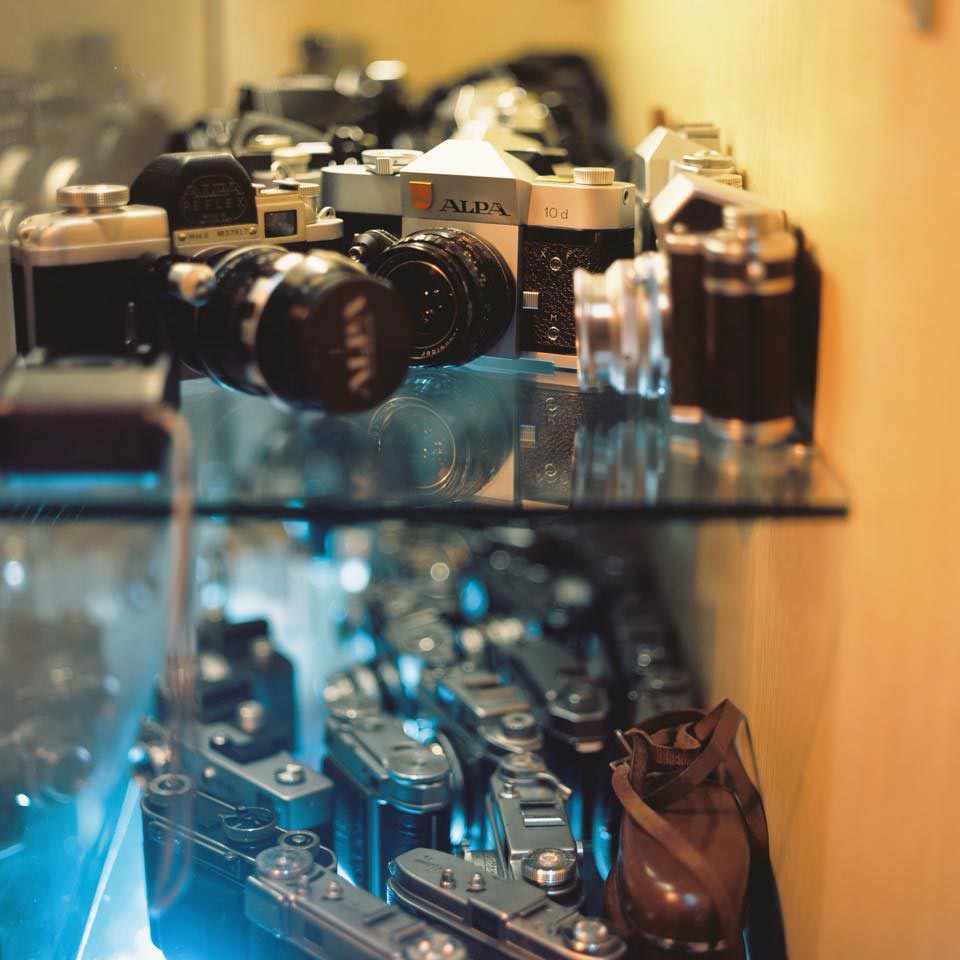
Hoang Huy currently owns Sang Studio. Apart from possessing a huge collection of rare antique film cameras, he also opens short-term classes on photography in Hanoi and manages Shutter Shop which sells film cameras.
Hai Linh is a graphic designer who lives in Hanoi. Besides her main job in communication department in an NGO, Hai Linh is also working on her personal artistic project. Connect with Hai Linh here.
